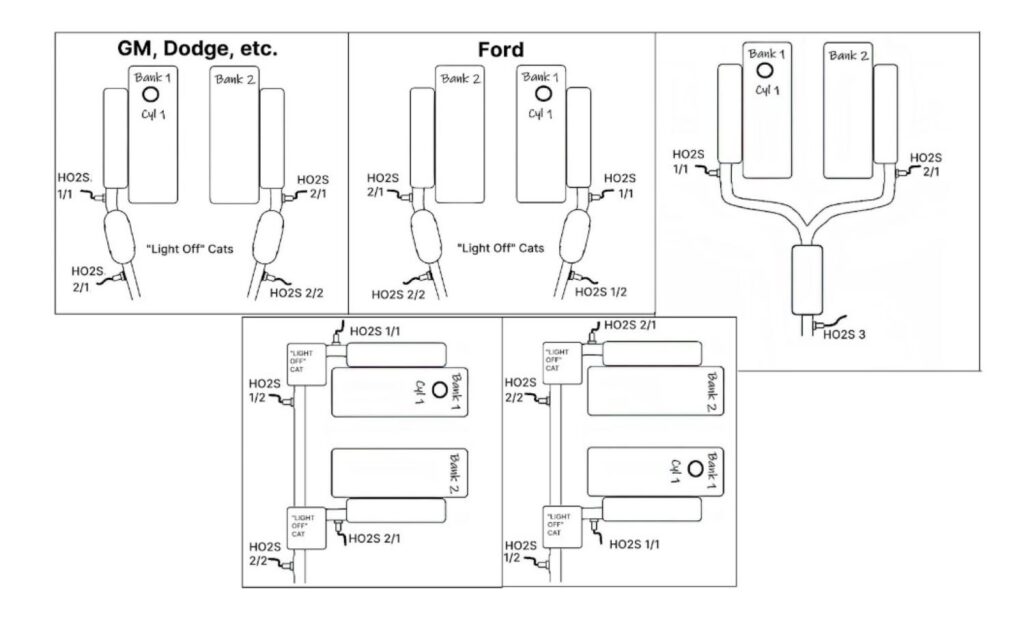Q: Where Are the Oxygen Sensors Typically Located?
A: Oxygen sensors are located in the vehicle’s exhaust system. Most vehicles are equipped with two oxygen sensors. An upstream oxygen sensor is mounted before the catalytic converter. Meanwhile, a downstream sensor is mounted after the cat-con.
Oxygens sensors measure the amount of oxygen in the exhaust. Your vehicle’s powertrain control module (PCM) uses the data from these sensors to calculate the proper amount of fuel needed by the engine. The input from the downstream sensor is also used to monitor the health of your catalytic converter.

Tips on How to Access the Oxygen Sensors

In most modern vehicles, you can find two sensors near the motor and two sensors near your catalytic converter. An oxygen sensor resembles a spark plug. It looks like a small metal device with wires coming out of it.
If you’re accessing the oxygen sensors because of a fault code, you’d have to be sure which particular sensor needs to be inspected and/or replaced.
You’ll usually need a special tool (there are several varieties of these), but even with the tool it can be difficult to remove the sensor sometimes because of where it’s located. Sometimes it’s even difficult to disconnect and reconnect the wires for the same reason.
If you’re removing and reinstalling the same sensor, use some anti-seize compound on the threads. New sensors come with it. If you don’t, you may not be able to remove the sensor again without destroying the threads in the converter or exhaust.
Any information provided on this Website is for informational purposes only and is not intended to replace consultation with a professional mechanic. The accuracy and timeliness of the information may change from the time of publication.
































Where is the connection located from the exhaust to the ? (Location on the car area)????
Bank 1 / cylinder 1 on a 2000 mustang V6 4.8 liter manual